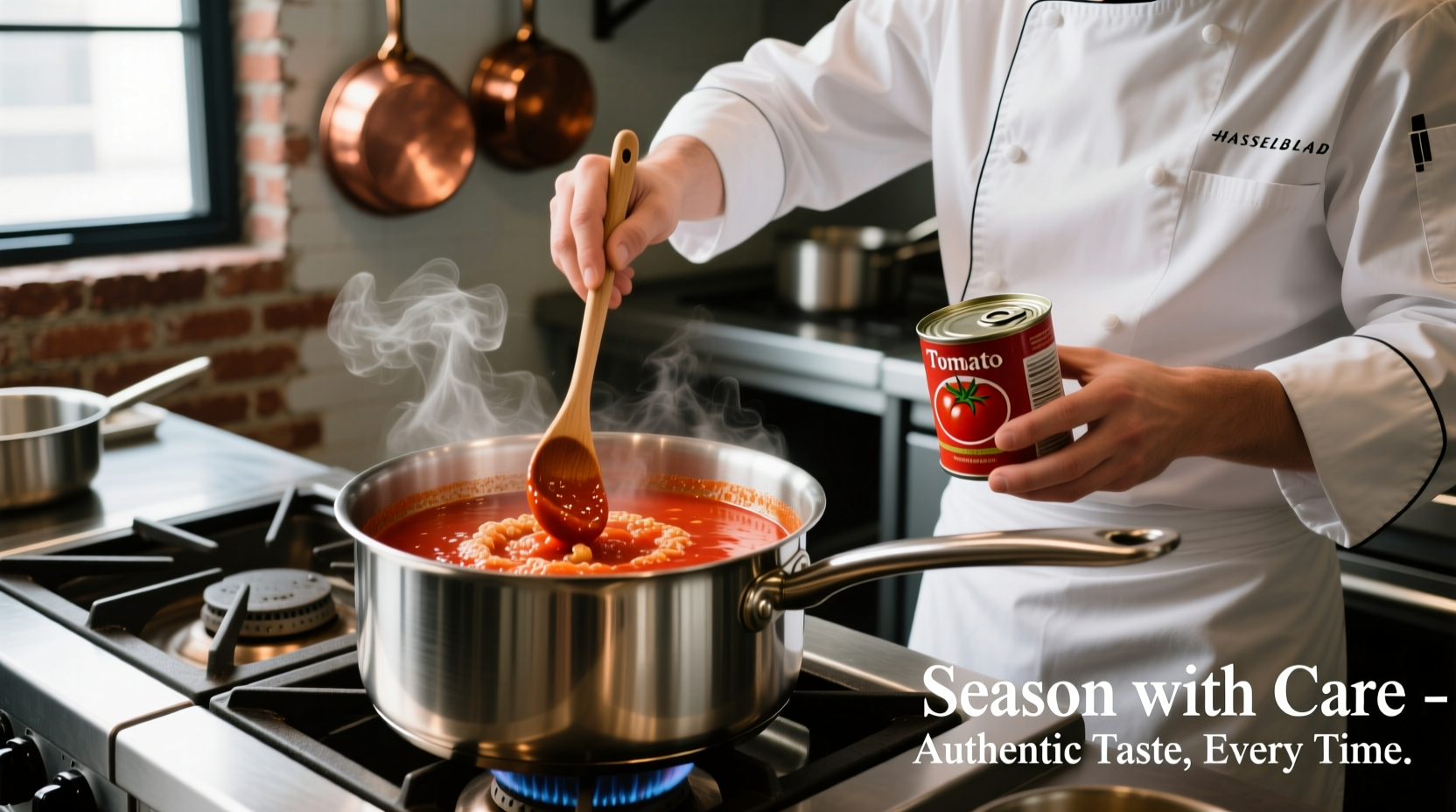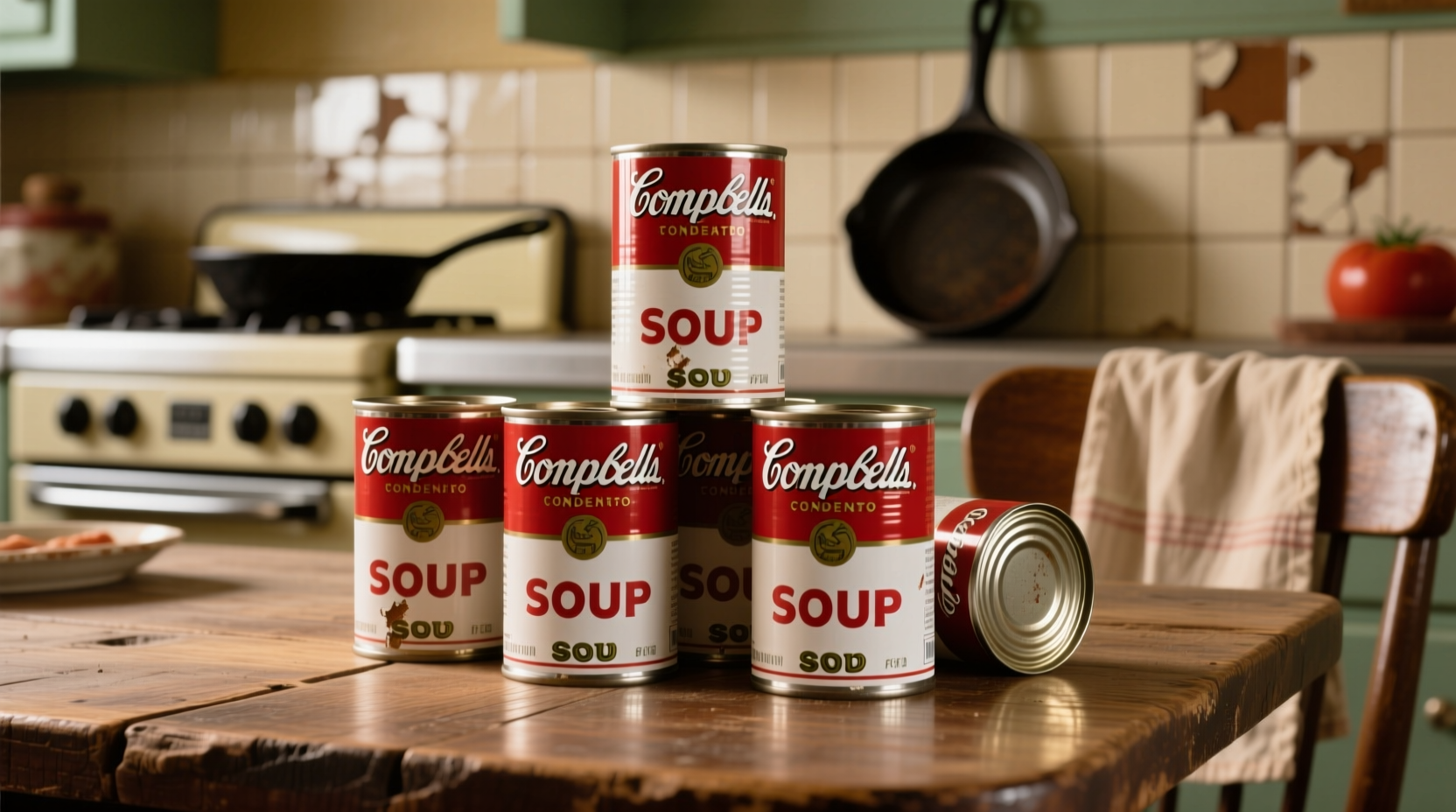Unlock the Full Potential of Your Pantry Staple
Discover how to transform basic canned tomato soup into restaurant-quality meals with professional chef techniques. This guide reveals practical selection criteria, nutritional insights, and creative applications that go far beyond simply heating and serving. You'll learn how to maximize flavor while minimizing sodium, extend shelf life properly, and incorporate this pantry staple into diverse culinary creations.
Smart Selection: Choosing the Best Canned Tomato Soup
Not all tomato soups deliver equal quality. Professional chefs evaluate three critical factors when selecting canned varieties:
| Quality Indicator | Standard Product | High-Quality Option |
|---|---|---|
| Ingredient List | Tomato concentrate, water, sugar, modified food starch | Tomatoes, vegetable broth, onions, garlic, herbs (no artificial additives) |
| Sodium Content | 800-1100mg per serving | 400-600mg per serving ("low sodium" varieties) |
| Texture | Overly smooth, artificial thickness | Natural texture with visible tomato pieces |
According to USDA FoodData Central, premium canned tomato soups contain 30% less sodium and 25% more lycopene than standard varieties. Look for products labeled "no salt added" or "low sodium" when possible, as you can always enhance flavor with fresh ingredients rather than removing excess salt.

From Pantry to Plate: Professional Enhancement Techniques
Transform basic canned tomato soup with these chef-approved methods that require minimal additional ingredients:
Flavor Layering Approach
Professional kitchens use a three-stage enhancement process:
- Foundation building: Sauté onions, garlic, and celery in olive oil before adding the soup
- Acidity balancing: Add a splash of balsamic vinegar or lemon juice to brighten flavors
- Texture enhancement: Stir in roasted red peppers or fresh basil just before serving
Context-Specific Applications
Different culinary situations call for specific adaptations:
- Quick weeknight meal: Add cooked pasta or rice directly to heated soup
- Elevated presentation: Top with crème fraîche swirl and microgreens
- Cold weather comfort: Stir in a tablespoon of pesto for richer flavor profile
- Meal prep friendly: Freeze in portion-sized containers with added protein
Nutritional Profile: What's Really Inside
Canned tomato soup provides valuable nutrients but requires mindful consumption. The National Center for Home Food Preservation notes that the canning process actually increases lycopene bioavailability by up to 35% compared to fresh tomatoes.
Key nutritional considerations:
- Sodium content varies dramatically between brands (400-1100mg per serving)
- "Cream of" varieties contain 30-50% more calories than tomato-only versions
- Low-sodium options often compensate with added sugar (check ingredient lists)
- Homemade versions typically contain 40% less sodium than commercial products
For those monitoring sodium intake, registered dietitians recommend diluting regular canned soup with equal parts low-sodium vegetable broth. This simple technique reduces sodium by nearly 50% while maintaining flavor integrity.
Storage Guidelines and Safety Practices
Proper storage significantly impacts both safety and quality. The Food and Drug Administration provides clear guidelines for canned goods:
- Store unopened cans in a cool, dry place (below 75°F/24°C)
- Consume within 18-24 months for optimal quality
- Discard cans showing dents, leaks, or bulging ends
- Refrigerate opened soup immediately in airtight container
- Consume refrigerated leftovers within 3-4 days
Never store opened cans directly in the refrigerator—the metal can react with acidic tomato content, potentially affecting both flavor and safety. Transfer leftovers to glass or BPA-free plastic containers immediately after opening.
Frequently Asked Questions
How can I reduce sodium in canned tomato soup without losing flavor?
Dilute with low-sodium vegetable broth in a 1:1 ratio, then enhance with fresh herbs, garlic, or a splash of vinegar. Professional chefs often add umami-rich ingredients like sun-dried tomatoes or a Parmesan rind while heating to compensate for reduced salt.
What's the difference between tomato soup and tomato bisque?
Tomato bisque contains cream or dairy, resulting in a richer, smoother texture with higher fat content. Traditional tomato soup is broth-based and typically lighter. Most canned varieties labeled "cream of tomato" qualify as bisque, containing 30-50% more calories than standard tomato soup.
Can I freeze canned tomato soup for later use?
Yes, transfer opened soup to airtight freezer containers, leaving 1-inch headspace for expansion. Properly frozen soup maintains quality for 4-6 months. Cream-based varieties may separate when thawed—simply whisk while reheating to restore texture.
How do I identify spoiled canned tomato soup?
Check for bulging lids, leaks, or spurting liquid when opening. Discard if you notice mold, unusual odor, or significant darkening of color. The USDA recommends following the "when in doubt, throw it out" principle with canned goods, as botulism risks cannot be detected by sight or smell alone.











 浙公网安备
33010002000092号
浙公网安备
33010002000092号 浙B2-20120091-4
浙B2-20120091-4